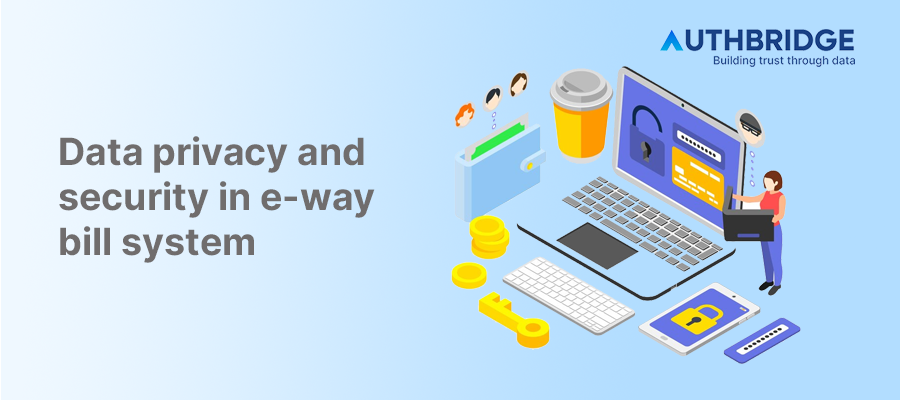Enhancing Data Privacy And Security In The E-Way Bill System: Key Measures And Best Practices For GST Compliance

Introduction to E-Way Bill System Security
The E-Way Bill system, a critical component of India's GST framework, mandates the generation of an electronic waybill for the movement of goods exceeding a certain value. This digital transformation has streamlined tax compliance and goods transportation but also introduced significant data privacy and security considerations.
Overview of the E-Way Bill System
Introduced to facilitate the seamless movement of goods across state lines, the E-Way Bill system requires businesses to generate an electronic bill before transporting goods worth more than Rs. 50,000. This system helps in tracking shipments in real-time, reducing tax evasion, and ensuring efficient logistics management.
Importance of Data Privacy and Security
With the digitization of tax compliance and logistics documentation, protecting sensitive business and personal information has become paramount. The E-Way Bill system handles vast amounts of data, making it a potential target for cyber threats. Ensuring the confidentiality, integrity, and availability of this data is crucial for maintaining trust in the GST system and safeguarding against financial and reputational damage.
High-Level Security Features in the E-Way Bill System
To address these concerns, the National Informatics Centre (NIC) has implemented several high-level security measures within the E-Way Bill system.
Two-Factor Authentication (2FA)
2FA adds an extra layer of security by requiring users to provide two different authentication factors to verify themselves. This method significantly reduces the risk of unauthorized access.
Secure Login Measures
The E-Way Bill system now mandates a secure login process, especially for taxpayers with an Annual Aggregate Turnover (AATO) exceeding Rs. 100 Crores. This process includes traditional credentials (username and password) and a One-Time Password (OTP), enhancing the security of user accounts.
OTP Verification Process
The OTP for 2FA can be received through multiple channels, ensuring flexibility and accessibility for users. These channels include:
- SMS
- The "Sandes" app
- The "NIC-GST-Shield" app
This multi-channel approach ensures that users can securely access their accounts, even if one channel is compromised or unavailable.
Implementation of Two-Factor Authentication
To bolster the security framework of the E-Way Bill system, the NIC has mandated the implementation of two-factor authentication (2FA) for taxpayers with an Annual Aggregate Turnover (AATO) exceeding Rs. 100 Crores.
Requirement for Taxpayers with AATO Over 100 Cr
This measure is aimed at enhancing the security of the e-Way Bill and GST e-Invoice system, ensuring that high-value transactions are protected against unauthorized access.
Steps to Register for 2FA
- Login to the GST E-Way Bill System: Navigate to the main menu after logging in.
- Select 'Two-Factor Authentication': Confirm the registration for 2FA.
- Enter OTP: Upon confirmation, the system will prompt for an OTP along with the usual login credentials during subsequent logins.
OTP Delivery Methods
Method | Description |
SMS | Receive OTP directly via text message |
"Sandes" App | An alternative app-based OTP delivery |
"NIC-GST-Shield" App | A dedicated app for enhanced security OTP delivery |
Challenges and Solutions in Enhancing Security
Despite the robust security measures implemented, the E-Way Bill system faces ongoing challenges in ensuring data privacy and security.
Common Security Challenges
- Phishing Attacks: Fraudulent attempts to obtain sensitive information by disguising as a trustworthy entity.
- Account Hijacking: Unauthorized access to users' accounts, leading to data theft or manipulation.
Best Practices for Secure E-Way Bill Transactions
- Regular Password Changes: Encourage users to change their passwords frequently.
- Educate Users: Conduct awareness programs on recognizing phishing attempts and securing account information.
- Use Secure Connections: Ensure that all transactions are conducted over secure, encrypted connections.
Future Directions in E-Way Bill Security
The NIC's ongoing commitment to the security of the E-Way Bill system suggests a future where technological advancements play a pivotal role in safeguarding taxpayer data.
NIC's Commitment to Security
The NIC continues to explore new technologies and methodologies to enhance the security of the E-Way Bill system, ensuring it remains resilient against evolving cyber threats.
Potential Technological Advancements
- Blockchain Technology: For immutable record-keeping and transaction tracking.
- Artificial Intelligence: To detect and respond to security incidents in real-time.
Conclusion
The implementation of high-level security measures, such as two-factor authentication, in the E-Way Bill system represents a significant step forward in protecting sensitive taxpayer data. As the system continues to evolve, it is imperative for both the NIC and taxpayers to remain vigilant and proactive in addressing security challenges. By adhering to best practices and embracing technological advancements, the integrity and confidentiality of the E-Way Bill system can be maintained, ensuring a secure and efficient environment for the movement of goods across India.
This comprehensive approach to understanding and enhancing data privacy and security within the E-Way Bill system aims to provide stakeholders with the knowledge and tools necessary for safeguarding against cyber threats, thereby fostering a secure and trustworthy tax compliance ecosystem.
Category

Abhinandan Banerjee
(Associate Manager - Marketing)
Abhinandan is a dynamic Product and Content Marketer, boasting over seven years of experience in crafting impactful marketing strategies across diverse environments. Known for his strategic insights, he propels digital growth and boosts brand visibility by transforming complex ideas into compelling content that inspires action.



